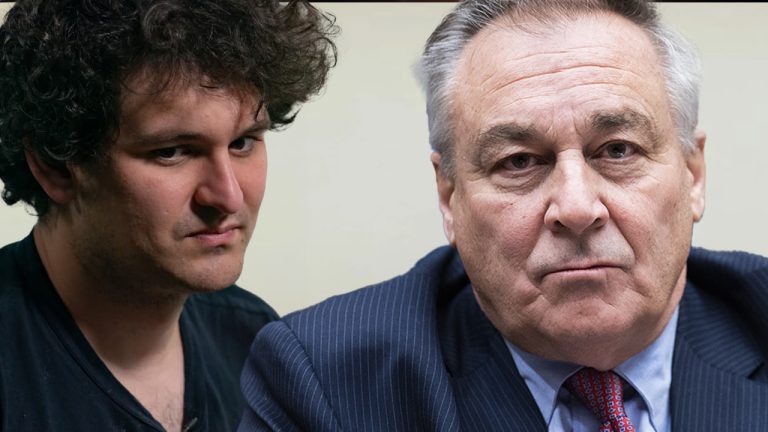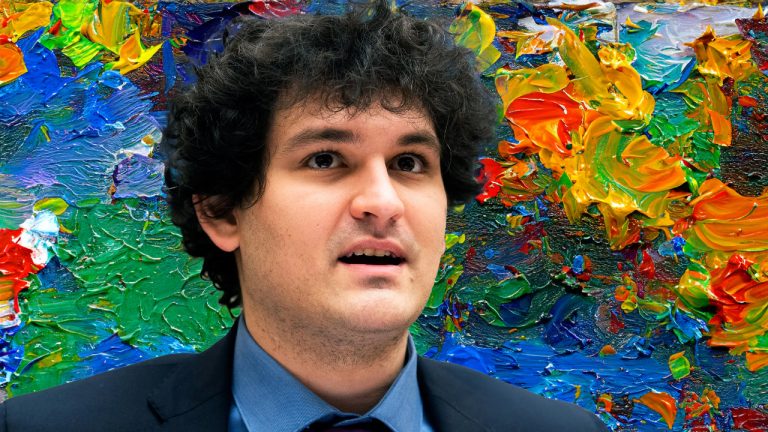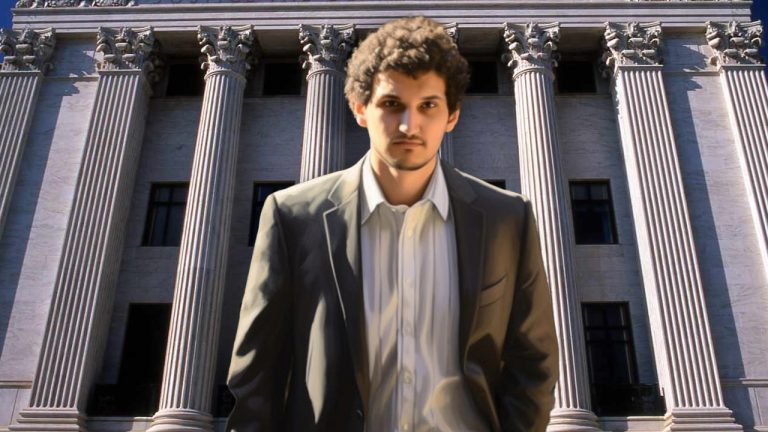
A US judge has sentenced disgraced FTX founder Sam Bankman-Fried to 25 years in prison after the former crypto tycoon was convicted of fraud charges last year. District Judge Lewis A. Kaplan also sentenced Bankman-Fried to three years of supervised release and ordered him to pay $11 billion in forfeiture. FTX imploded and filed for […]
The post Disgraced FTX Founder Sam Bankman-Fried Sentenced to 25 Years in Prison After Fraud Conviction appeared first on The Daily Hodl.
 In a packed courtroom, Sam Bankman-Fried, the founder of the cryptocurrency exchange FTX, was sentenced to 25 years in prison by Judge Lewis A. Kaplan. The sentencing follows a landmark trial that has captured widespread attention for its revelations of financial misconduct within the cryptocurrency industry. Crypto Mogul Sam Bankman-Fried Handed 25-Year Sentence; $11 Billion […]
In a packed courtroom, Sam Bankman-Fried, the founder of the cryptocurrency exchange FTX, was sentenced to 25 years in prison by Judge Lewis A. Kaplan. The sentencing follows a landmark trial that has captured widespread attention for its revelations of financial misconduct within the cryptocurrency industry. Crypto Mogul Sam Bankman-Fried Handed 25-Year Sentence; $11 Billion […] On Thursday, March 28, 2024, the former head of FTX, Sam Bankman-Fried, received his sentence during a federal court proceeding in Manhattan. U.S. Marshals escorted Bankman-Fried into the courtroom at precisely 9:39 a.m. Eastern Time, as reported by Matthew Russell Lee of Inner City Press. Judge Lewis Kaplan said, ” I know the Probation Department […]
On Thursday, March 28, 2024, the former head of FTX, Sam Bankman-Fried, received his sentence during a federal court proceeding in Manhattan. U.S. Marshals escorted Bankman-Fried into the courtroom at precisely 9:39 a.m. Eastern Time, as reported by Matthew Russell Lee of Inner City Press. Judge Lewis Kaplan said, ” I know the Probation Department […] John J. Ray III, the chief executive officer of FTX Trading Ltd., has issued a strong rebuttal against former CEO Sam Bankman-Fried’s assertions regarding the company’s financial state and the impact on its creditors. FTX Chief Restructuring Officer and CEO Debunks Bankman-Fried’s FTX Solvency Claims John J. Ray III outlined the extensive efforts made to […]
John J. Ray III, the chief executive officer of FTX Trading Ltd., has issued a strong rebuttal against former CEO Sam Bankman-Fried’s assertions regarding the company’s financial state and the impact on its creditors. FTX Chief Restructuring Officer and CEO Debunks Bankman-Fried’s FTX Solvency Claims John J. Ray III outlined the extensive efforts made to […] In a detailed letter to Judge Lewis Kaplan, the legal representatives for Sam Bankman-Fried, the embattled founder of cryptocurrency exchange FTX, have vehemently argued against the government’s recommendation for a 50-year prison sentence, labeling it as a “medieval view of punishment.” Legal Team Contests Proposed 50-Year Sentence for Sam Bankman-Fried as Unjust and Excessive In […]
In a detailed letter to Judge Lewis Kaplan, the legal representatives for Sam Bankman-Fried, the embattled founder of cryptocurrency exchange FTX, have vehemently argued against the government’s recommendation for a 50-year prison sentence, labeling it as a “medieval view of punishment.” Legal Team Contests Proposed 50-Year Sentence for Sam Bankman-Fried as Unjust and Excessive In […] In a statement from U.S. Attorney Damian Williams and his team, the fallen FTX founder, Sam Bankman-Fried (SBF), faces a recommendation for up to half a century behind bars for his offenses. The prosecutors argue that SBF has a penchant for high-stake risk and “gambling repeatedly with other people’s money.” SBF’s Path From Finance Tycoon […]
In a statement from U.S. Attorney Damian Williams and his team, the fallen FTX founder, Sam Bankman-Fried (SBF), faces a recommendation for up to half a century behind bars for his offenses. The prosecutors argue that SBF has a penchant for high-stake risk and “gambling repeatedly with other people’s money.” SBF’s Path From Finance Tycoon […] In a recent legal submission, Sam Bankman-Fried’s freshly appointed defense team strongly criticized the suggested century-long sentence as “grotesque.” The firm Mukasey Young is pushing for a gentler verdict for the 31-year-old creator of FTX. Bankman-Fried’s Defense Urges Judge to Cap Sentence at 78 Months The defense’s legal brief argues that the suggested sentence is […]
In a recent legal submission, Sam Bankman-Fried’s freshly appointed defense team strongly criticized the suggested century-long sentence as “grotesque.” The firm Mukasey Young is pushing for a gentler verdict for the 31-year-old creator of FTX. Bankman-Fried’s Defense Urges Judge to Cap Sentence at 78 Months The defense’s legal brief argues that the suggested sentence is […]